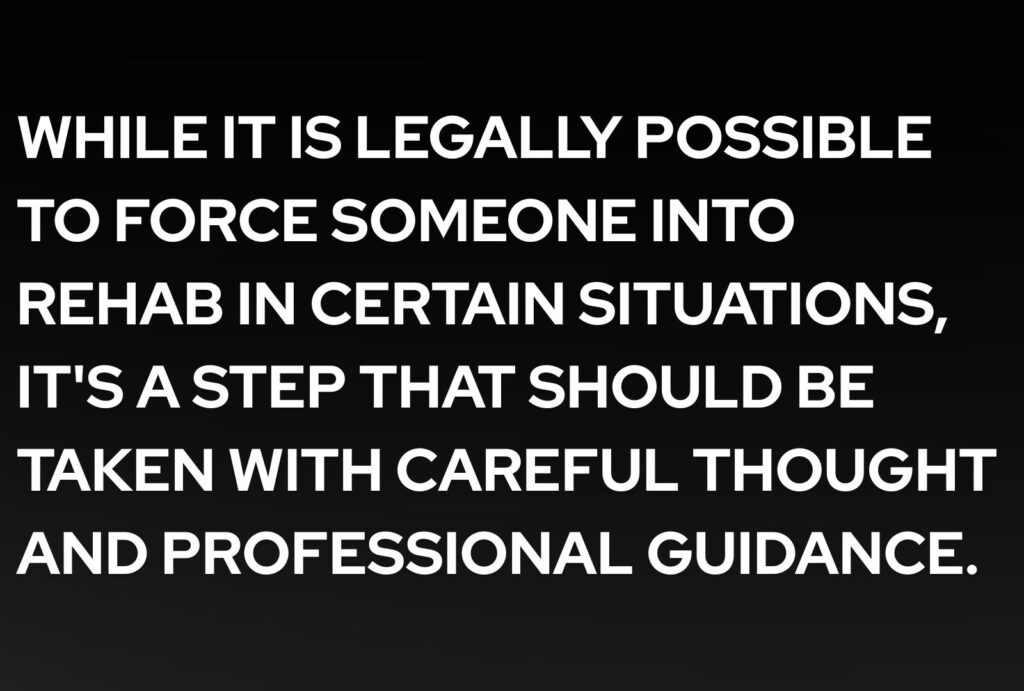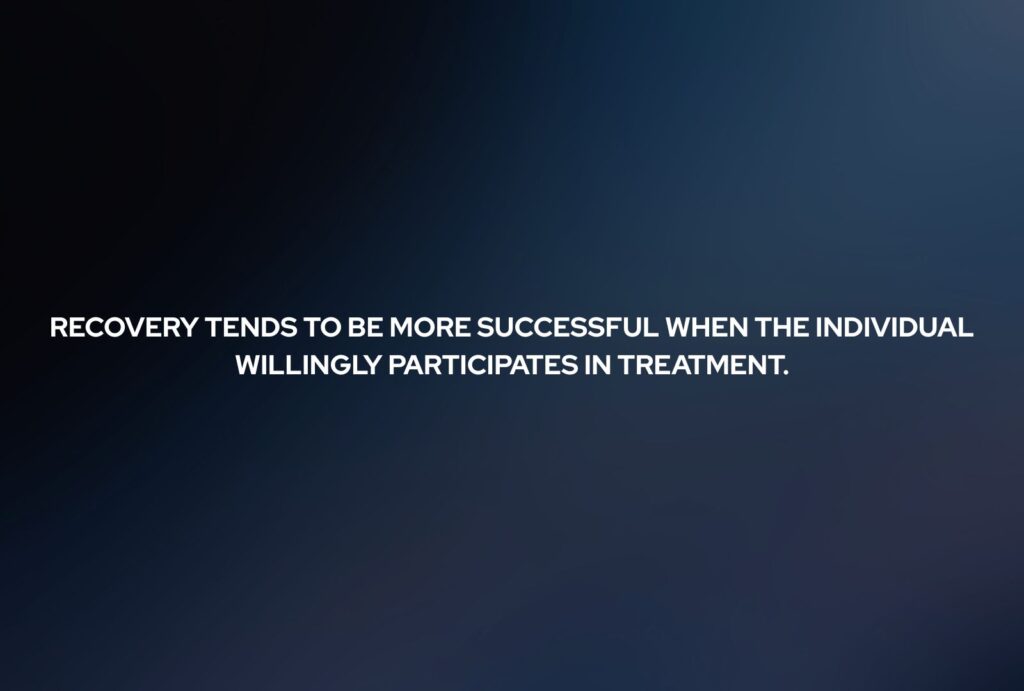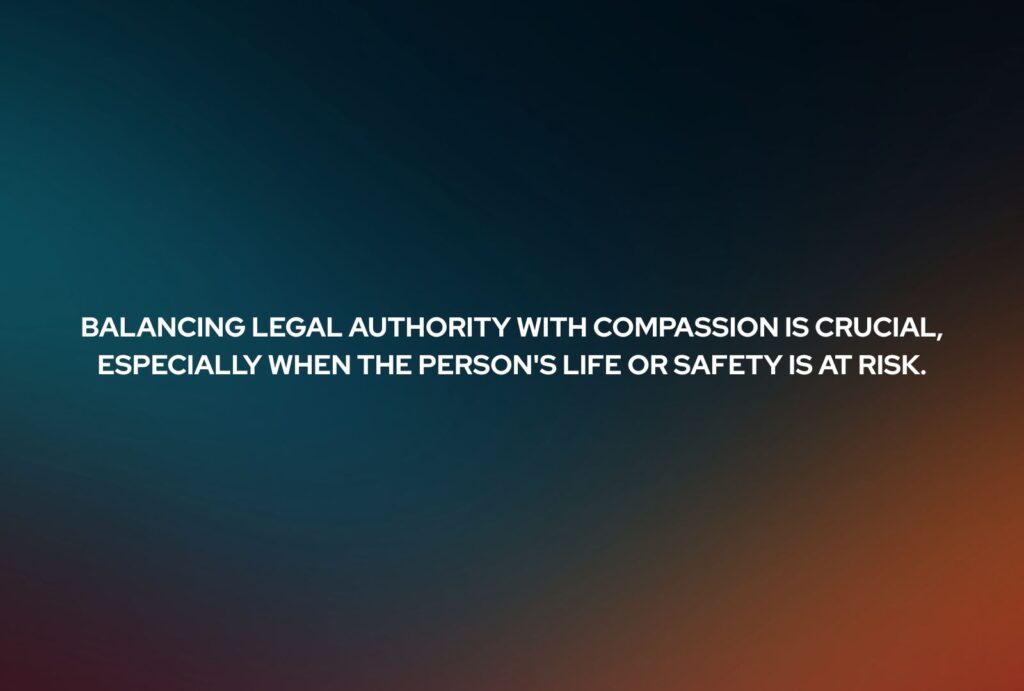In some situations, it is possible to force someone into rehab, but doing so involves strict legal processes and serious ethical considerations. Each state has specific laws, often known as involuntary commitment laws that allow families or legal guardians to seek treatment on behalf of a loved one who poses a danger to themselves or others due to substance use.

Understanding Involuntary Commitment Laws
Most states have civil commitment laws that allow individuals to be admitted into a rehab or mental health facility without their consent. These laws typically require that:
- The individual has a diagnosed substance use disorder
- They present a clear danger to themselves or others
- They are incapable of making informed decisions about their health
In California, the Lanterman-Petris-Short (LPS) Act allows for involuntary holds under strict medical and legal oversight. These holds are usually short-term unless extended through court hearings.
Who Can Initiate the Process?
Only specific parties can petition for involuntary rehab, such as:
- Immediate family members
- Legal guardians
- Medical professionals
- Law enforcement officers (in certain cases)
The petitioner must present clear evidence of danger, neglect, or incapacity. Court approval is often required to move forward with forced admission.
How Long Can Someone Be Held?
The length of an involuntary stay varies:
- Initial holds can last 72 hours
- With further court approval, holds can extend up to 14 or 30 days
- Long-term treatment may be mandated by the court if ongoing danger is proven
It’s important to note that forced rehab is rarely a long-term solution on its own. Recovery tends to be more successful when the individual willingly participates in treatment.
Ethical Considerations and Emotional Impacts

Even when legal, forcing someone into rehab raises significant ethical concerns:
- Loss of autonomy can damage trust between the individual and their family
- Stigma and resentment may emerge, especially if the individual doesn't believe they need help
- Motivation: A person forced into treatment may not engage fully with the process
That said, for those in life-threatening situations such as overdose risk or severe neglect intervention may be the only path to survival.
Programs like our inpatient rehab in Anaheim often support families navigating this difficult process. Treatment providers can assist with evaluations, legal documentation, and compassionate onboarding to ensure safety and dignity throughout.
What Happens in Rehab?
Before deciding whether or not to initiate involuntary treatment, it's important to understand what the experience entails. In what happens in rehab, we break down how detox, therapy, and structured support work together to help individuals overcome addiction.
How Long Does Rehab Last?
Another common question in this process is duration. If you're unsure how long your loved one may need to stay in treatment, our guide on how long does rehab last covers typical timelines for 30-, 60-, and 90-day programs, including aftercare options.

Conclusion
While it is legally possible to force someone into rehab in certain situations, it's a step that should be taken with careful thought and professional guidance. Balancing legal authority with compassion is crucial, especially when the person’s life or safety is at risk. With support from experienced treatment centers like Liftoff Recovery, families can take meaningful steps toward intervention—while still respecting the emotional complexity of the decision.





.png)
